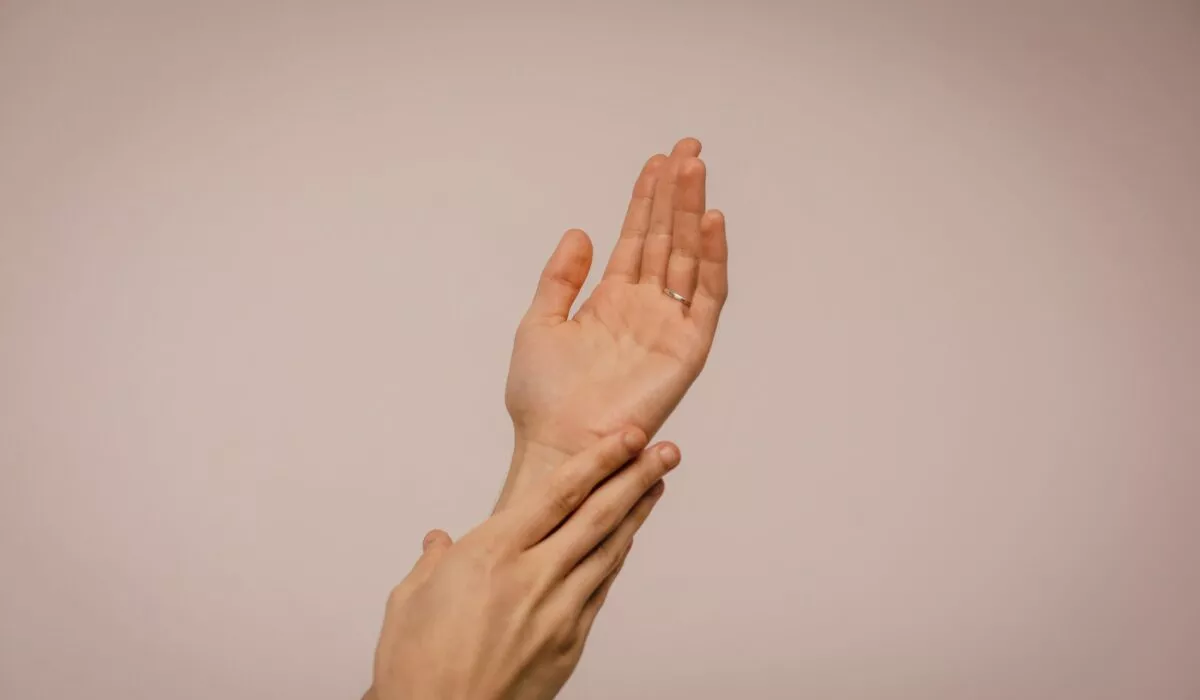Thinking
It is not news that in our society, the number of people who tend to be more comfortable using their right hand (constituting around 85% of the human population) greatly outnumbers those preferring their left. It is not known exactly when this trait of handedness, or laterality (the preference shown by animal for one side of its body over the other, such as right-handedness or left-footedness) arose. However, early hominin fossils, such as that of the 1.6-million-year-old Nariokotome Boy (a Homo ergaster skeleton, found in Kenya in 1984), signify that handedness even existed then in other species – this fossil was evidently right-handed as its ulna was longer than the usual of its species, and there were deeper bone insertions of its deltoid muscles. Studies of Neanderthal skeletons has also revealed that the majority of them were also right-handed, showing greater strength in their right hands, presumably from throwing weapons while hunting. [1]

(Figure 1: The Nariokotome Boy)
Since handedness has been in existence for so long, it leads us to wonder if there is any evolutionary advantage to being right- handed, seeing as the majority of humans are. Furthermore, how is this trait passed on?
Large numbers of studies have been conducted investigating the different possible determiners of laterality in individuals, and if there are any trends in cognitive variations that people of a certain hand preference may share. [2] In the past, scientists believed that the two hemispheres of the brain carried out the same functions and worked in the same way, however now that has been proved wrong; the development of independent yet collaborative functions of the left and right hemispheres taking place simultaneously is called lateralisation. There are many proven advantages to having a lateralised brain, above all having an increased cognitive ability.
A study [Rogers et al. (2004)], investigating the effect of brain lateralisation on the ability of chicks to identify predators. One group of chicks was exposed to light before they hatched, and another group were kept in the dark while hatching. [3] This meant the chicks in the dark lacked visual lateralisation, as light exposure in the embryo stimulates visual lateralisation in chicks. [4]. Each chick was then given a situation where they were to find grains stuck in pebbles, taking their attention away from the silhouette of an approaching predator. The study showed that the lateralised chicks detected the predator much more quickly, and quicker on the left sides of their brains that the right sides. However, both sides of the brains of all the non- lateralised chicks detected the predator around the same speed as the slower right sides of the lateralised chicks, indicating how the lateralised chicks were able to use the different processing abilities of the two sides of their brains (the left side for identifying grains amongst pebbles and the right to detect the predator) whereas the non-lateralised chicks were not able to do this. More interestingly, these chicks were much more startled upon seeing the silhouette, alluding to their inability to focus on monitoring the predator at the same time as feeding on the grains. [5] This shows how lateralisation would have had an evolutionary advantage in animals living in the wild, including humans, increasing vigilance and ability to assess situations more accurately.
The trait of handedness itself is determined by the left side of the brain, and is associated with language-related areas. In particular, one genome-wide association study (GWAS) [Brandler, et al. (2013)] studied individuals with reading disabilities, and found common variants in certain genes shown by these people. They discovered that the variant most associated with their disabilities was in the gene PCSK6 – it is an enzyme that cleaves the morphogen, NODAL, into an active form. In a plethora of different species, NODAL is an important factor in the development of left/right asymmetry, and without it, PCSK6 knockout mice (where the PCSK6 gene has been inactivated) show defects such as situs inversus (when internal organs’ positions are reversed about a vertical line of symmetry) and heterotaxia (abnormal arrangement of organs in the upper body). [6]

Figure 2: Different genes playing a part in the development of the left-right asymmetry in a chick embryo
Another GWAS [de Kovel et al. (2019)] suggested that the gene MAP2 was a significant factor in determining handedness specifically; it is known to play a part in neurogenesis and the development of brain structures and motor skills. This was also seen to be expressed largely in the right hippocampus than the left as a rat develops [Moskal et al. (2006)] This evidence proved to be reliable enough to the researchers in the former study to conclude that this is the most important protein-coding gene for left handedness, as the correlation was found in hundreds of thousands of individuals of studied individuals. [7] [8]
The possible prenatal factors involved in determining handedness have also been explored [Fujioka et al. (2021)], such as foetal position (how/what direction the foetus lies in the uterus) and presentation (which part of the foetus’ body leads out of the birth canal) [9], as well as number of weeks of gestation, the handedness of the parents and the time of year it was born. Children from the EDEN study (where pregnant women from two French university hospitals in Nancy and Poitiers were monitored over three years from 2003-2006, in order to investigate pre-natal and post-natal factors affecting child growth) were recruited and their handedness was monitored when they were five. Other data was also analysed, including if they had been born before 37 weeks of pregnancy, and they found a link between the father’s handedness and the child’s handedness (however, peculiarly, no link between the mother’s and the child’s) They noted how the percentage of left handed children was greater amongst those who had fathers who were not right handed, compared to those with right handed fathers, and that girls born prematurely were significantly less lateralised when born than premature boys and babies who were not premature, and also that babies born in winter and autumn were somewhat less lateralised than those born in spring and summer. [10]

Figure 3: A diagram depicting common different presentation of foetuses
Although there may be shorter term causes of handedness, scientists have considered the fact that there also may be an evolutionary advantage to being right-handed.
One explanation suggests that it is due to different movements of our hands in carrying out certain tasks: rotating your hand from the palm facing downwards to it facing upwards is known to anatomists as supination and the opposite movement is called pronation. Supination requires the use of our bicep muscles whereas pronation does not, therefore supination is more powerful than pronation – therefore it has been considered if early hominins may have needed to use their right hands in order to use certain tools, such as those requiring clockwise rotation, and if this was passed on through generations as other aspects of culture were also passed on. [11] Although it could have been a survival disadvantage at the time, left- handedness has not been proven to affect health, contrary to inaccurate conclusions of some studies in the past. These studies suggested links between left-handedness and breast cancer, learning disorders and decreased life expectancy, however these are conditions/situations which have a wide array of different factors affecting them, including genetic history of (non-left-handed) ancestors, diseases caught, diet, and if they smoke, invalidating these conclusions. [12]

Figure 4: A diagram depicting pronation and supination.
To conclude, handedness depends on a range of different long-term and short-term factors which are mostly out of our control. However, in the past, it was not uncommon for right- handedness to be forced in some schools in some countries, particularly when teaching children how to write. [13] In fact, before the late 20th century, there were many false theories surrounding left handedness, such as that it was a sign of the Devil’s work and witchcraft, or that it was a warning sign of mental illness. Nowadays, these beliefs are much less widespread. [14]
This article was taken from the latest edition of Scientia which you can read here.



